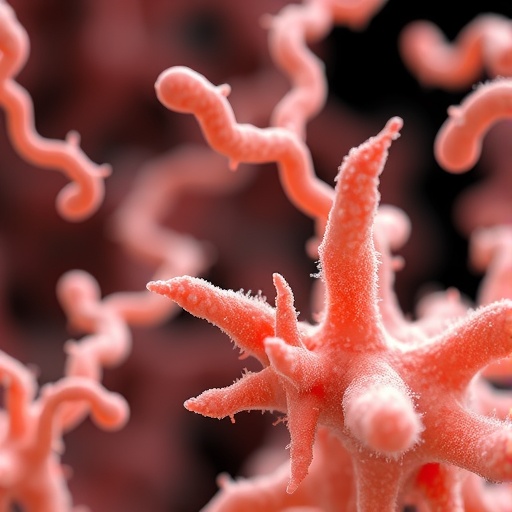In the relentless battle against antibiotic-resistant bacteria, scientists are turning to some of Earth’s oldest life forms for new solutions. Microbes known as Archaea, which have thrived for billions of years in some of the planet’s harshest environments — from boiling acid pools to deep-sea hydrothermal vents — are now revealing untapped reservoirs of potential antibiotics. Recent research spearheaded by César de la Fuente and his team at the University of Pennsylvania has utilized advanced artificial intelligence to unlock these microbial treasures, opening the door to next-generation antibiotic discovery.
Archaea are a fascinating domain of life, fundamentally distinct from bacteria and eukaryotes such as plants, animals, and fungi. Although they resemble bacteria morphologically, Archaea’s cellular structures, genetic blueprints, and biochemical pathways diverge markedly. These differences have equipped Archaea to endure extreme conditions where few other organisms survive, including intense heat, high pressure, and toxic chemical surroundings. Such adaptations suggest that Archaea might harbor novel biochemical defenses — in particular, molecules that could serve as effective antibiotics, working through mechanisms divergent from those currently deployed in medicine.
Harnessing the power of artificial intelligence, de la Fuente’s team has developed and refined an algorithmic tool named APEX. This deep learning framework was trained on thousands of peptides, short chains of amino acids known for their antimicrobial properties, alongside comprehensive data about pathogenic bacteria that infect humans. Using this AI-powered approach, the researchers scanned proteomic data from over 230 species of Archaea, identifying more than 12,000 candidate antimicrobial peptides — which they termed “archaeasins.” These novel peptides exhibited distinctive characteristics, particularly in their electric charge distribution, setting them apart from established antimicrobial peptides.
The AI’s ability to sift through such immense biological datasets accelerated the discovery process dramatically. Rather than sifting through countless molecules experimentally, the APEX system highlighted the most promising peptide candidates. The researchers selected eighty archaeasins for experimental validation against a panel of drug-resistant bacteria, demonstrating that an impressive 93% of these tested peptides inhibited bacterial growth in at least one strain. This high hit rate underscores the effectiveness of combining cutting-edge computational methods with ancient biological diversity in the hunt for new antibiotics.
One of the most compelling discoveries pertained to how archaeasins exert their antibacterial effects. Whereas many conventional antimicrobial peptides disrupt bacterial membranes by creating pores or holes, archaeasins appear to attack a different vulnerability: the electrical signaling mechanisms that maintain bacterial cellular homeostasis. By interfering with these internal bioelectrical processes, archaeasins effectively incapacitate bacteria from within — a mode of action that could be less susceptible to existing resistance pathways.
Further in vivo experiments in animal models revealed the clinical promise of these molecules. Three selected archaeasins were administered to treat infections caused by multidrug-resistant hospital-acquired bacteria. Within four days, all three peptides arrested bacterial dissemination effectively. Notably, one archaeasin demonstrated efficacy comparable to polymyxin B, a potent antibiotic currently reserved as a last resort in clinical settings due to its toxicity and the growing spectrum of resistant pathogens it targets.
The findings reported by de la Fuente’s group signal a potentially paradigm-shifting chapter in antibiotic discovery. With global health agencies warning of a looming post-antibiotic era, the imperative for innovative therapeutic modalities has never been more urgent. Exploring Archaea as sources of antimicrobial agents challenges traditional mindsets about where to search for new antibiotics and exemplifies the power of interdisciplinary approaches that unite microbiology, bioengineering, and artificial intelligence.
Looking ahead, the research team plans to enhance the APEX platform by incorporating structural prediction capabilities — enabling the AI not only to identify peptide sequences with antimicrobial potential but also to anticipate their three-dimensional shapes. Such improvements could dramatically refine candidate selection and expedite the design of optimized molecules with enhanced stability, reduced toxicity, and improved pharmacodynamics.
The researchers also recognize the critical importance of evaluating archaeasins’ long-term safety and therapeutic effectiveness in comprehensive preclinical and eventual human clinical trials. Understanding how these novel peptides interact with human tissues and immune responses will be central to translating laboratory success into clinically usable antibiotics. Moreover, deciphering the evolutionary logic underlying archaeasins’ unique mechanisms could inspire entirely new classes of precision antimicrobials.
De la Fuente emphasizes that the world’s microbial frontiers remain largely unexplored. “There’s a whole other domain of life waiting to be explored,” he notes, highlighting that ancient life forms like Archaea have honed extraordinary biochemical tools over billions of years. By leveraging these evolved strategies through modern machine learning, we may finally tip the scales in the escalating arms race against antibiotic-resistant pathogens.
This innovative research not only broadens the spectrum of potential antimicrobials but also showcases the synergy between deep learning algorithms and evolutionary biology. As antimicrobial resistance escalates globally, interdisciplinary efforts such as this could become pivotal in safeguarding public health, reaffirming that even the oldest organisms on Earth have new lessons to teach us about combating modern medical challenges.
Subject of Research:
Not applicable
Article Title:
Deep learning reveals antibiotics in the archaeal proteome
News Publication Date:
12-Aug-2025
Web References:
http://dx.doi.org/10.1038/s41564-025-02061-0
References:
De la Fuente et al., “Deep learning reveals antibiotics in the archaeal proteome,” Nature Microbiology, 2025.
Image Credits:
Credit: Jianing Bai
Keywords:
Archaea, antibiotic resistance, antimicrobial peptides, AI drug discovery, deep learning, machine learning, proteomics, drug-resistant bacteria, artificial intelligence, peptide therapeutics, microbiology, bioengineering




